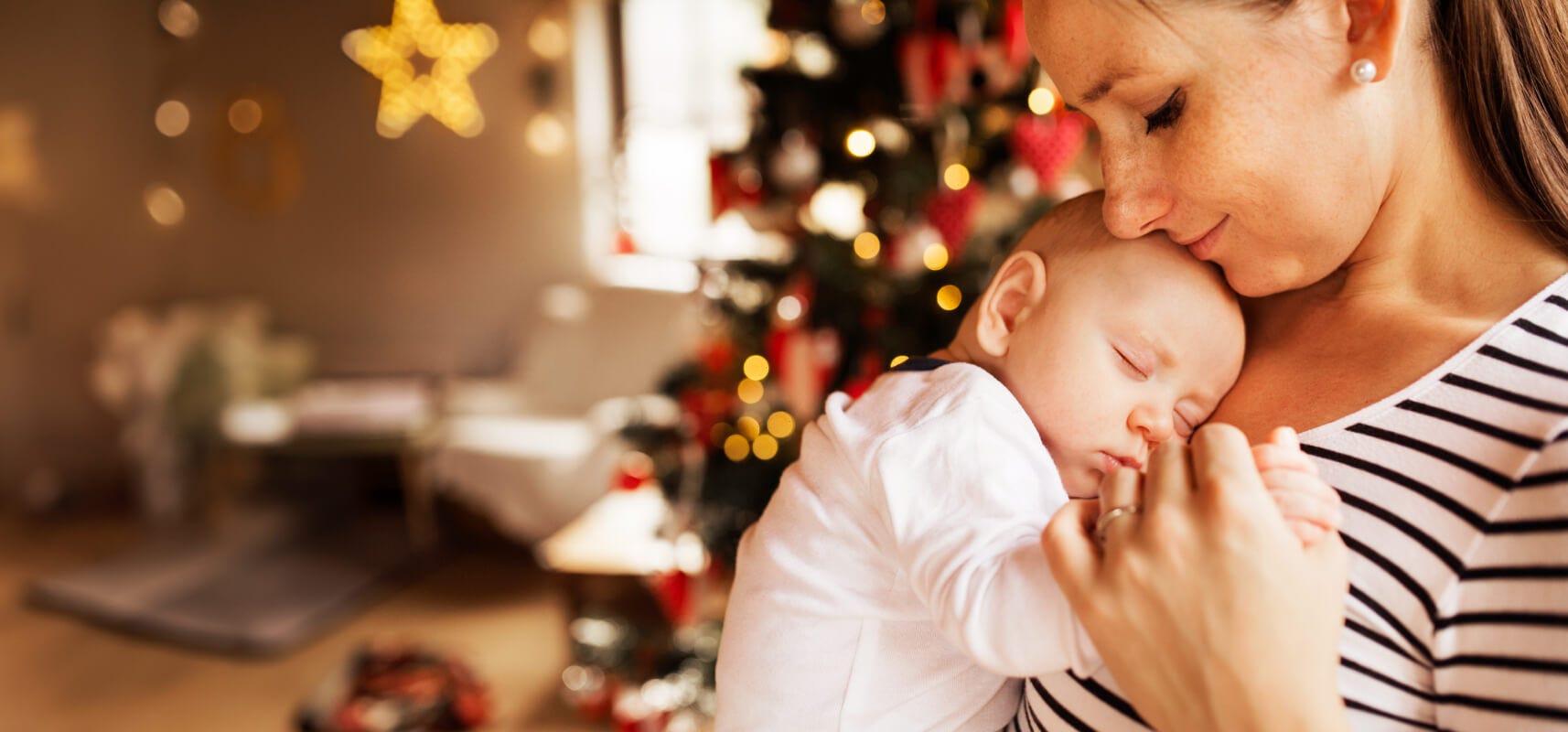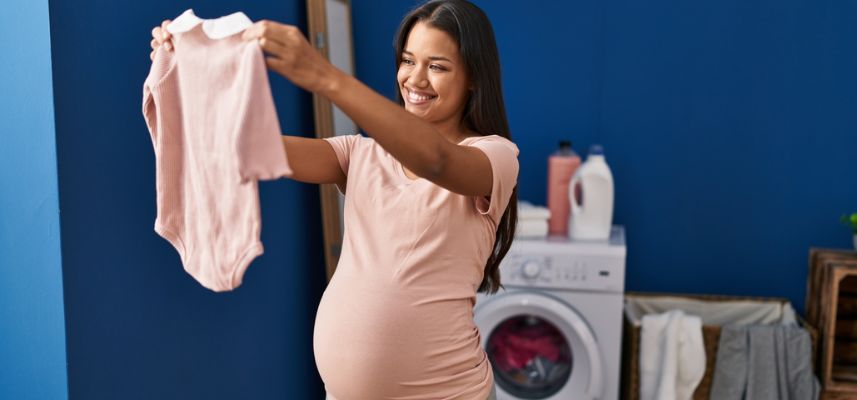There’s an entire industry centered around infant sleep. You can purchase hundreds of different products that offer the promise of more, better, safer sleep. Bassinets, travel cribs, robotic rockers, mini-cribs, and convertible cribs. Noise machines, blackout curtains, crib warmers, and sleep sacks. Books, courses, and endless advice. When you’re a sleep deprived new parent, you might try anything to help your baby sleep longer so that you can also get some rest.
The Importance of Sleep
As any parent knows, sleep is essential for everyone in the household. It’s when we recover, when our bodies and brains repair themselves and prepare for the day ahead. Fragmented sleep is not the same as sleeping through the night, even if you’re able to accumulate 8 hours. With longer stretches, we are able to move through the stages of the sleep cycle, thus allowing our bodies to truly rest and recover in all the ways it needs.
When there’s a baby in the house, it’s hard to get those long stretches. At first, babies usually only sleep about 2-3 hours at a time. They gradually build up to sleeping longer stretches, and most will be better equipped to sleep all night (or almost all night) at around 6 months of age or older.
Severe sleep deprivation is not just uncomfortable, but it can also be dangerous. Lack of sleep can have profound effects on both mental and physical health. For example, women who experience more sleep deprivation are more likely to also have postpartum depression (though the connection may be bidirectional, with postpartum depression also contributing to sleep issues). Additionally, women who report the most significant interrupted sleep are more likely to have postpartum depression with suicidal ideation. For this reason, severe sleep deprivation should be considered a mental health concern; if you’re feeling these effects, speak to your healthcare provider and any other available caregivers to establish a plan to improve the volume and quality of your sleep (even if your baby hasn’t gotten the memo yet).
Since babies aren’t ready to sleep long stretches right away, it’s important to figure out how to allow parents to rest while also keeping the baby safe. Though SIDS (Sudden Infant Death Syndrome) can’t be prevented, there are steps parents can take to reduce their child’s risk of SIDS and accidental suffocation at night based on the best evidence available. The American Academy of Pediatrics (AAP) updated their recommendations in 2022 based on the best evidence available to keep babies as safe and healthy as possible throughout nights and naps. Those recommendations are summarized below. The more you know about safe infant sleep, the better prepared you’ll be to set everyone up for safe sleep success when you’re worn out in the middle of the night.
The Basics of Safe Sleep
The safest place for a baby to sleep is on their back, on a firm, flat surface designed for infants. Babies should be placed to sleep in their dedicated space alone, without any other items like pillows or blankets. To further reduce risk of death or injury, this safe sleep space should be located in the parent’s room for the first 6 months of life.
"Back is Best" Sleep Positions
It is recommended that all infants be placed on their backs for every sleep until they reach 1 year of age. Once they are able to roll in both directions, they can be allowed to sleep in the position that they choose - but they should still be placed in bed on their backs initially for optimal airflow and reducing risk of suffocation.
Safe Sleeping Surfaces
Although there are many products out there that seem like they would make cozy and comfortable sleep surfaces for your baby like cushions, pillows, rockers, and swings, many of these products have been linked to infant death and are considered unsafe for sleep. One of the dangers of these products is positional asphyxiation, which occurs when an infant's head is positioned slightly forward enough to restrict their airway. Products with an incline or other positional support should only be used when the baby is awake; if they fall asleep while using one of these products, they should be moved to a flat surface for the remainder of their sleep. Similar risks are present for infants who sleep in a carseat that is not secured in the car. If your baby falls asleep in the car seat, move them to their crib or a safe, flat sleeping surface as soon as you arrive at your destination.
Bed Sharing vs. Room Sharing
The term “room sharing” applies when an infant sleeps in the same room as their parents, but in their own dedicated safe sleep space. This sleep environment has been demonstrated to reduce the risk of SIDS in infants under 6 months of age, and is recommended by the American Academy of Pediatrics throughout this timeframe.
Even in light of these evidence based recommendations, the AAP recognizes that tired parents may fall asleep with their infant, whether intentionally or not. There will be times when your baby is particularly fussy and sleepless, and even the most policy-adherent parents may fall asleep while feeding or caring for their infant. For this reason, it is recommended that all parents be aware of safe bed-sharing practices and have a safe space prepared, even if you don’t intend to co-sleep.
Prepare a safe bed-sharing space with the following in mind
- Never sleep with a baby in a recliner or on the couch - these locations increase the risk of infant death by 22-67 times. Given that many parents try to stay awake by sitting up, this is a particularly important message to keep in mind. If you’re at high risk of falling asleep, your baby may be safer with you in your bed than on the couch.
- Remove all unused blankets, pillows, and other suffocation hazards as these items represent a significant risk to an infant when sleeping in an adult bed. Keep the sleeping space as clear as possible, and utilize a firm mattress when available.
- Never co-sleep with your baby after consuming alcohol or medications that might make you drowsy. Bed-sharing with a smoker is not recommended.
- Limit the number of people in the bed with you. Non-parents in the sleep space (including siblings) increase the risks associated with bed-sharing. Pets should not be allowed on the sleeping surface with an infant.
- Move your baby back to their own bed as soon as you wake up and are able to do so safely.
Having a safe space prepared and being aware of safe bed-sharing practices can keep your infant safe even in the most sleep-deprived situations.
Clothing and Temperature
A general rule of thumb is that a baby should be wearing no more than one more layer of clothing than the adults feel comfortable in when they go to bed for the night. The temperature of the room may ideally remain between 68-72 degrees Fahrenheit, though the AAP notes a lack of strict evidence supporting this range and instead recommends dressing the baby in layers that are appropriate for the ambient temperature of the room.
Swaddling can offer comfort to tiny babies as it mimics the tight quarters of their mother’s belly, which can allow for more sleep all around. However, as soon as the baby learns how to roll over, that swaddle needs to go. If a baby were to roll over in the night while swaddled, they would potentially be unable to roll back over or lift their head to breathe. A better option at that point is a wearable blanket or sleep sack, which provides all the comfort and coziness of a nighttime blanket without the risk of suffocation that loose blankets represent. Weighted swaddles, blankets, and sleep sacks are not recommended.
Pacifiers: Yes or No?
Though it’s unclear exactly why, pacifiers have been associated with a reduced risk of SIDS. AAP recommends offering a pacifier as soon as breastfeeding is established, or as soon as possible if the baby is exclusively bottle feeding. Some babies won’t be interested, however. Babies who refuse the pacifier should not be forced to take it.
Sleep Training: The Great Debate
You may have heard of the “four month sleep regression”, which refers to the period of time around four months old when your baby goes through a growth spurt and suddenly stops sleeping longer than 90 minutes at a time. During this window of development, their sleep cycles develop into a more adult-like rhythm. They now need to learn to link them together without a parent’s help, instead of waking up after each 90 minute cycle looking for help to go back to sleep. In essence, they need to learn how to fall asleep - and stay asleep - so that the whole family can again sleep through the night.
How families choose to help their child learn this essential skill varies widely. There are so many resources, strategies, and opinions out there regarding the “best” way to help your child learn to sleep - and some heated debates in online forums on this topic. Ultimately, whether you choose to let your child cry it out or co-sleep until they leave for college is entirely up to you as a parent. You don’t have to choose one extreme or the other, however. Sleep training isn’t all “cry it out”; there are many methods you can try to help your child learn how to fall asleep and stay asleep, and picking one that’s best for your family can often offer parents much-needed shut eye and improved mental health.
Some of the most common methods include:
- The Ferber Method, also known as timed check-ins, or graduated extinction. This involves putting the baby down in their bed after a complete bedtime routine, and allowing them to fuss while going in to check on them and comfort them at progressively lengthening intervals until they fall asleep. For example, you might lay the baby down, and then check on them after 5, then 10, then 15 minutes, until they fall asleep.
- Full Extinction is what is commonly referred to as “Cry It Out” sleep training. With this method, a parent puts the baby in their crib after a complete bedtime routine, and does not return to the room until the baby falls asleep.
- The Chair Method involves a parent remaining in the room with the baby but not interacting, similar to the “old lady whispering hush” in Goodnight Moon.
Though there is significant debate and attempts at research on the topic of whether, when, and how to sleep train, there is a lack of solid evidence using high quality research that suggests any significant harm or benefit to any of these methods. In fact, the evidence that is currently available points to no significant difference at age 6 among children whose families choose any of the above sleep training methods or none at all. There may be benefits to improving parental mental health and wellbeing, however, which is a factor worth noting since parents who are suffering from mental health concerns are often unable to provide the level of care and interaction that a baby needs to thrive.
Ultimately, every family will have different needs and priorities. As you get to know your baby and their personality, you may come across a strategy that works well for you and your parenting style. Every baby is different, and every family might find success with different strategies. At the end of the day, the priority is that your baby is safe within their sleeping space so that you can sleep soundly, too.
References
- Floro, Bob. “Let Them Cry It Out? Pediatric Sleep Hygeine.” American Academy of Quality Sleep Medicine. Published August 27 2020. https://aacsm.org/let-them-cry-it-out-pediatric-sleep-hygiene
- Moon, Rachel Y., et al. "Sleep-related infant deaths: updated 2022 recommendations for reducing infant deaths in the sleep environment." Pediatrics 150.1 (2022). https://pubmed.ncbi.nlm.nih.gov/35726558/
- Moon, Rachel Y. “How to Keep Your Sleeping Baby Safe: AAP Policy Explained.” American Academy of Pediatrics. Updated July 14, 2022. https://www.healthychildren.org/English/ages-stages/baby/sleep/Pages/A-Parents-Guide-to-Safe-Sleep.aspx
- “Safe Sleep for Babies.” Centers for Disease Control and Prevention. Updated Nov 27, 2018. https://www.cdc.gov/vitalsigns/safesleep/index.html
- Summer, Jay. “What is the Best Room Temperature for a Sleeping Baby?” Sleep Foundation. Updated April 29, 2022. https://www.sleepfoundation.org/baby-sleep/best-room-temperature-for-sleeping-baby
- Ruggeri, Amanda. “What Really Happens When Babies Are Left to Cry It Out?” BBC. Published March 30, 2022. https://www.bbc.com/future/article/20220322-how-sleep-training-affects-babies











